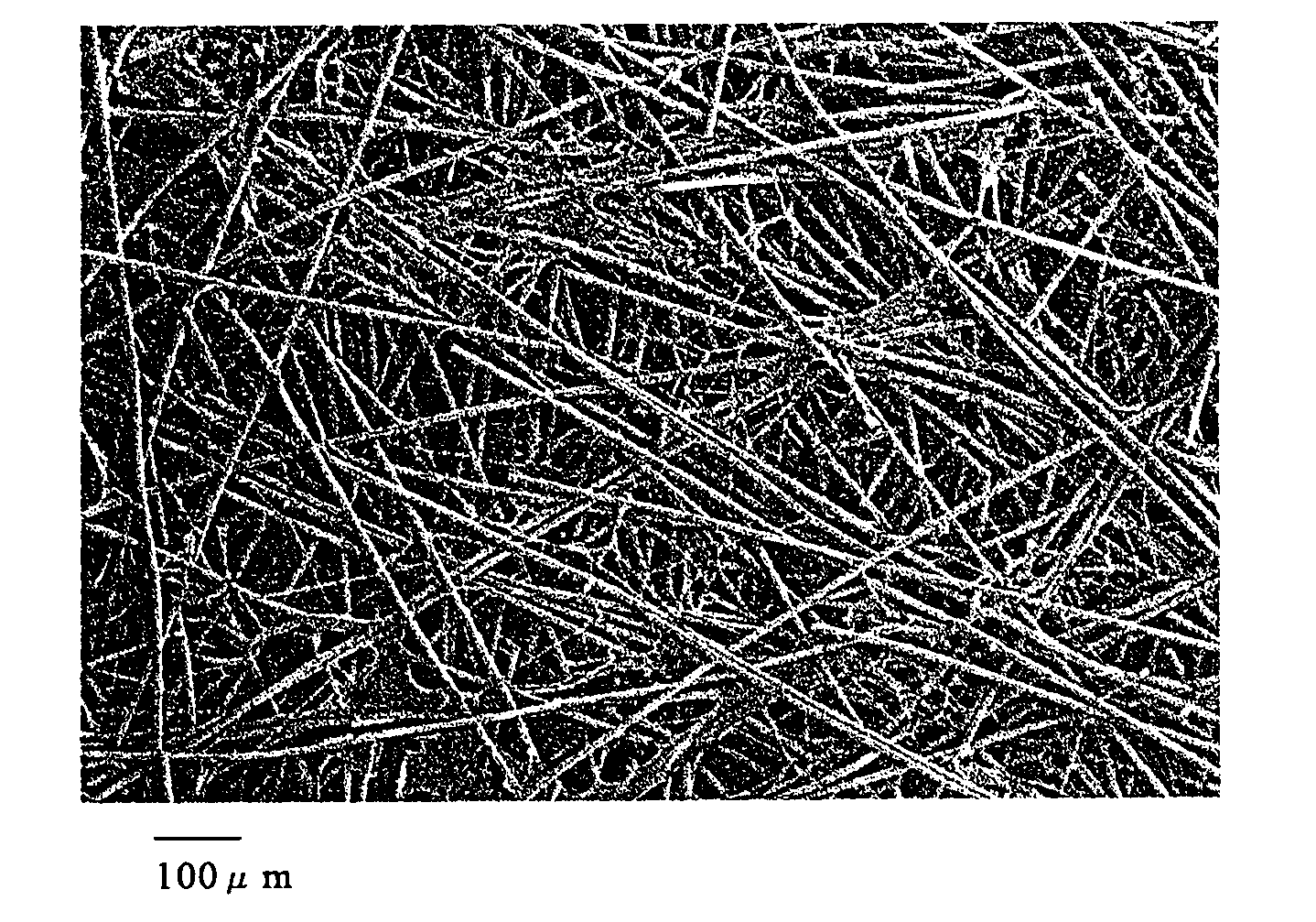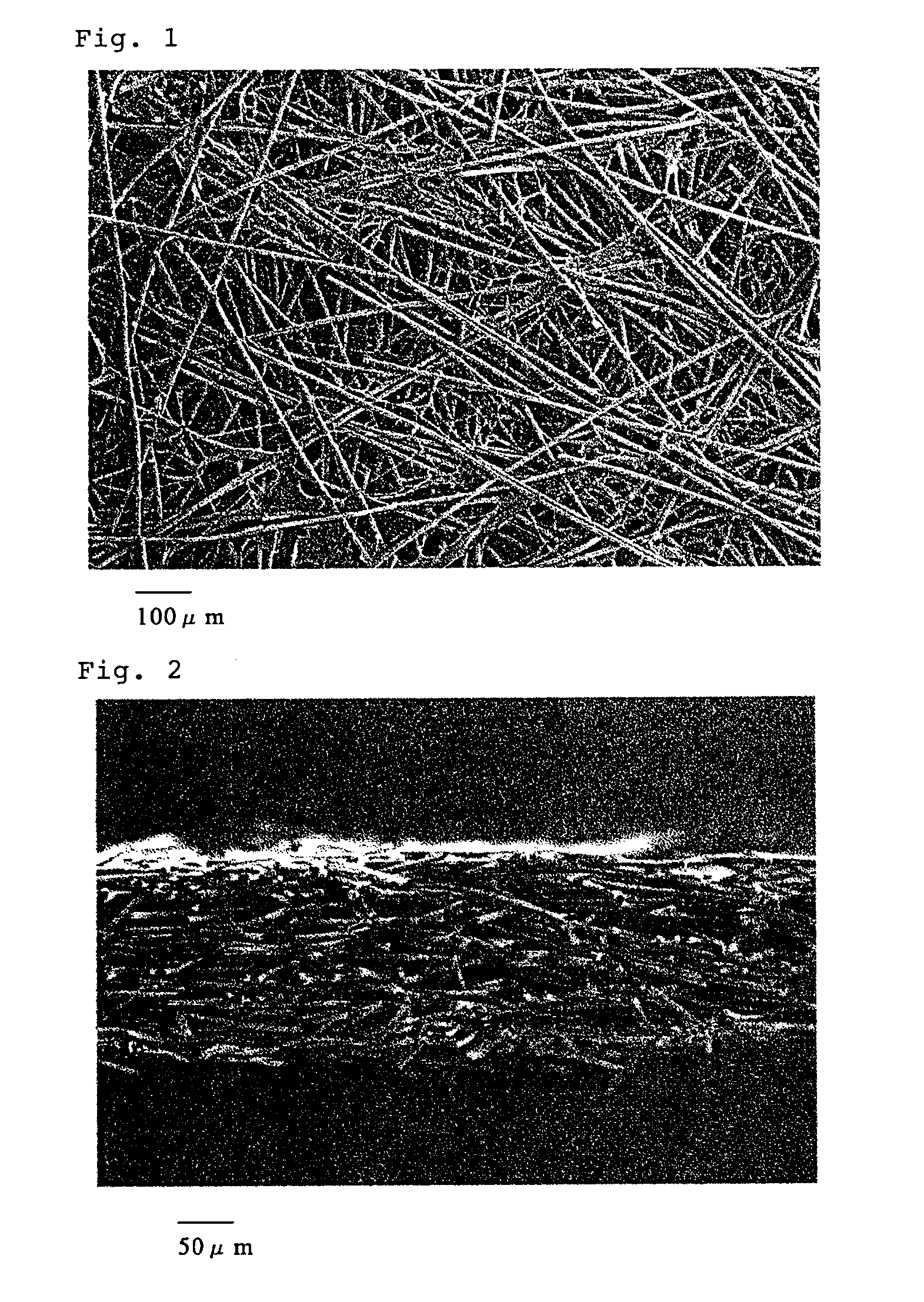Porous electrode substrate, method for producing the same, precursor sheet, membrane electrode assembly, and polymer electrolyte fuel cell
a technology of electrode substrate and membrane electrode, which is applied in the manufacture of batteries, cell components, final products, etc., can solve the problems of electrode substrate dimensional stability and surface precision, complex production process, and high production cost, and achieve excellent handling properties and surface smoothness, sufficient gas permeability and electrical conductivity, and low cost
- Summary
- Abstract
- Description
- Claims
- Application Information
AI Technical Summary
Benefits of technology
Problems solved by technology
Method used
Image
Examples
example 1
[0088]PAN-based carbon fibers having an average fiber diameter of 7 μm and an average fiber length of 3 mm were prepared as short carbon fibers (A). In addition, short acrylic fibers having an average fiber diameter of 4 μm and an average fiber length of 3 mm (trade name: D122, manufactured by MITSUBISHI RAYON CO., LTD.) were prepared as short carbon fiber precursors (b), and splittable acrylic sea-island composite short fibers composed of acrylic polymer and diacetate (cellulose acetate) which were to be fibrillated by beating (manufactured by MITSUBISHI RAYON CO., LTD., trade name: VONNEL M.V.P.-C651, average fiber length: 3 mm) were prepared as fibrillar carbon fiber precursors (b′).
[0089]A precursor sheet and a three-dimensional entangled structure precursor sheet were continuously produced by the following operations (1) to (7).
(1) Defibration of Short Carbon Fibers (A)
[0090]Short carbon fibers (A) were dispersed in water so that the fiber concentration was 1% (10 g / L), and wer...
example 2
[0106]A porous electrode substrate was obtained in the same manner as in Example 1, except that the mass ratio of short carbon fibers (A), short carbon fiber precursors (b), and fibrillar carbon fiber precursors (b′) in the paper-making slurry was 50:40:10. The porous electrode substrate had little in-plane shrinkage during carbonization treatment, a sheet undulation as small as 2 mm or less, good surface smoothness, good gas permeability, good thickness, and good through-plane electric resistance. In addition, short carbon fibers (A) dispersed in the three-dimensional structure were joined together via three-dimensional mesh-like carbon fibers (B). The evaluation results are shown in Table 1.
example 3
[0107]A porous electrode substrate was obtained in the same manner as in Example 1, except that the pressurized water flow jet pressure was set at 1 MPa (nozzle 1), 2 MPa (nozzle 2), and 1 MPa (nozzle 3). In the porous electrode substrate, short carbon fibers (A) dispersed in the three-dimensional structure were joined together via three-dimensional mesh-like carbon fibers (B). The evaluation results are shown in Table 1.
PUM
 Login to View More
Login to View More Abstract
Description
Claims
Application Information
 Login to View More
Login to View More - R&D
- Intellectual Property
- Life Sciences
- Materials
- Tech Scout
- Unparalleled Data Quality
- Higher Quality Content
- 60% Fewer Hallucinations
Browse by: Latest US Patents, China's latest patents, Technical Efficacy Thesaurus, Application Domain, Technology Topic, Popular Technical Reports.
© 2025 PatSnap. All rights reserved.Legal|Privacy policy|Modern Slavery Act Transparency Statement|Sitemap|About US| Contact US: help@patsnap.com


